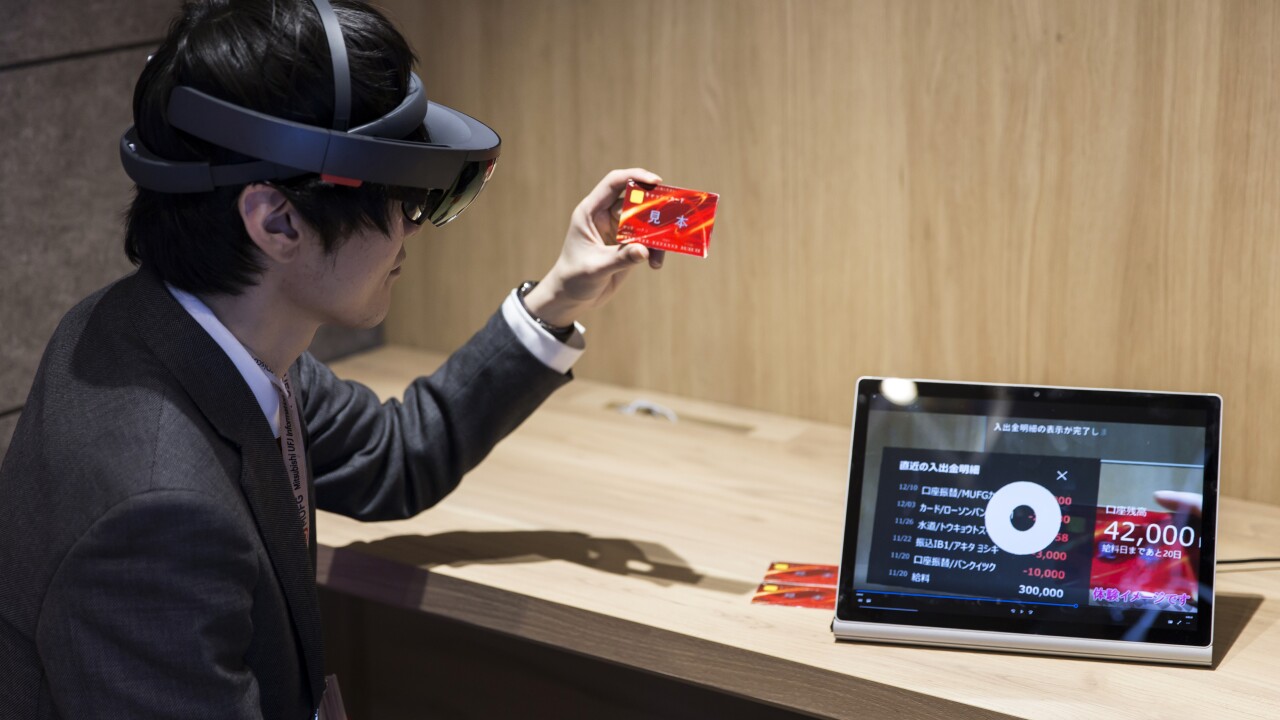IMGCAP(1)]
Mothers raced through the store obstacle course, grabbing groceries and other merchandise while clutching a baby. When they reached the finish line, they checked out at a register using a Bank of America Mini Card hanging from a key chain. It was another episode in the trend toward "experiential marketing."
The obstacle course was designed to show how easy and convenient it is to use the Mini Card and how it "will help you throughout the day as you shop with two kids hanging on your legs," says Steve Mochel, senior vice president for consumer marketing at New York-based Jack Morton Worldwide and one of the ad executives who helped develop the campaign. "They had to do things like carry a baby, grab two apples and check out at a register."
As competition for customers heats up, credit card issuers are spending more time and money developing experiential marketing campaigns that offer consumers the opportunity to interact with the product. By offering experiences, the issuers communicate with key demographics while creating incentives to pull out the plastic.
Washington Mutual Bank experiential marketing provides customers with the chance to earn behind-the-scenes tours at sporting events by collecting points with their "ESPN Total Access Reward Card."
One cardholder, a journalism student who was an aspiring sportswriter, recently cashed in his hard-earned points to get a tour of the ESPN SportsCenter studio, said Mitch Stevens, WaMu's senior vice president for partnership marketing. "He could have only gotten that experience using the ESPN Total Access Rewards Card," Stevens said.
WaMu is trying to develop similar partnerships with other companies that have strong brand recognition. "That lets us tap into a new pool of customers that for us is beyond the normal course of business," Stevens said.
Stevens offered a simple explanation for the rise in experiential marketing. "The value proposition of the card is not the same for everybody, so programs like this (ESPN Total Access) create a value proposition that really speaks to a person's individual lifestyle," he said. "You are seeing credit cards become even more customized. Competition is driving a push away from the one-size-fits-all approach."
Cat and dog owners who apply for a credit card through WaMu's partnership with PetSmart receive a card that features their animal's picture on it. "We have had other cardholders who have been judges at the Nathan's hot dog eating contest," Stevens said. "When you go to work and ask your friends what they did last weekend, I'm sure they can't match that–judging a hot dog eating contest."
One of the pioneers of experiential marketing was American Express, which has offered its customers special access to U.S. Open events for years.
Marketing consultant B. Joseph Pine, co-founder of Strategic Horizons LLP, an Aurora, Ohio-based "thinking studio," says credit card companies are realizing that unique experiences are a selling point. Whether it is admission to a cocktail party at the U.S. Open or a faster path through security at the airport, issuers increasingly are offering more ways to take advantage of their products.
"You feel like you are getting more value out of the card," Pine said. "You value that access that you might not otherwise have had."
Increased competition for customers also is driving the growing interest in experiential marketing. Issuers are searching for ways to differentiate themselves.
The Bank of America Mini Card obstacle course serves as a good example of how the right experience can raise public awareness of a product. "The experience we created was really relevant to the brand message," says Mochel. "It was really about convenience … It was easy to swipe.
"The whole product benefit thing was the card made your life easier," he continues. "You don't want to be digging in your wallet, with your keys in your hand, to get to the cards at the checkout line."
Marketers transported the obstacle course to malls in Phoenix, Dallas and Charlotte, N.C., pitting baby-carrying mothers against each other for prizes and bragging rights.
Traditional methods of reaching out to the public—TV, radio and print ads—do not have the impact they once did, which is forcing the credit card industry to search for new avenues of communicating with consumers.
The obstacle course succeeded on two fronts, Mochel said. It helped Bank of America sign up new customers, and it taught the public about the Mini Card, generating four million media impressions, which is the estimated number of people, who may have read about the event or learned about it via television and radio.
"As media becomes more and more fragmented, and [fewer] people turn to broadcast outlets, you really have to reach out in new ways," Mochel said. "TV is just not effective as it used to be."





